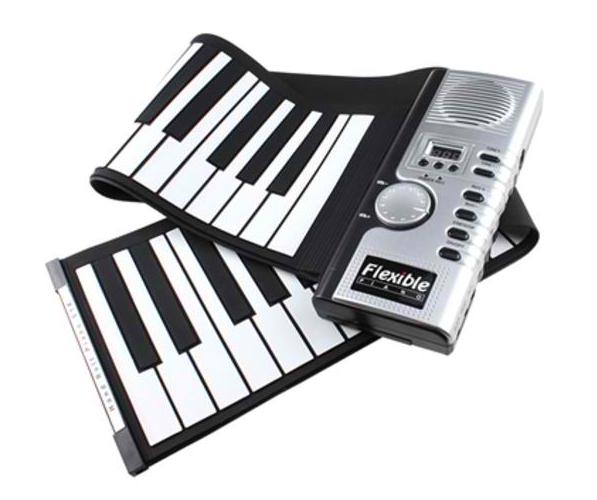 The roll-up piano is the rage these days among beginners and established piano enthusiasts. It provides a means to play or practice when a real piano is not available. Compared to standard pianos and electric keyboards, the roll-up piano is small, light weight and can pretty much fit inside a handbag or backpack, making it the most portable piano type around.
The roll-up piano is the rage these days among beginners and established piano enthusiasts. It provides a means to play or practice when a real piano is not available. Compared to standard pianos and electric keyboards, the roll-up piano is small, light weight and can pretty much fit inside a handbag or backpack, making it the most portable piano type around.
Powered by AA batteries, or electricity using an AC adapter, you can play music with a roll-up piano anywhere as long as there is a flat surface where you can lay it on. Sound quality may not be superior but still works well for entertainment or practicing when a piano is not available.
The device is usually made of a flexible rubber keyboard attached to a control panel. Sound is amplified by built-in speakers. Alternatively, headphones can be plugged into the device for “silent” playing. Depending on the model, a roll-up piano may include such functions and features as tone options, LED display, recorder & playback, MIDI out port, and many others.
Just like any other electronic device, a roll-up piano must be properly packed prior to shipping to ensure that it arrives in good working condition. Here are some tips on how to properly pack and ship a roll-up piano.
Remove any attachments such as AC adapter, headphones, or the foot pedal from the device. Roll or fold the keyboard following manufacturer’s instructions and place inside its accompanying pouch or carrier, if any. Place the device in its compartment in the original packaging. Do the same with the accessories. Make sure that the items are snug in the box and do not move or shake around. Use pieces of bubble wrap to keep loose items from moving.
If the original box is not available, bubble wrap the rolled piano. Also bubble wrap the accessories individually. Arrange the items inside a box with packing materials on the bottom, then, fill the box with more packing materials so the items don’t move or hit each other. There should be no movement inside the box.
Close and seal the box with heavy-duty packaging tape. Address and label the package and take to the post office or shipping company.
